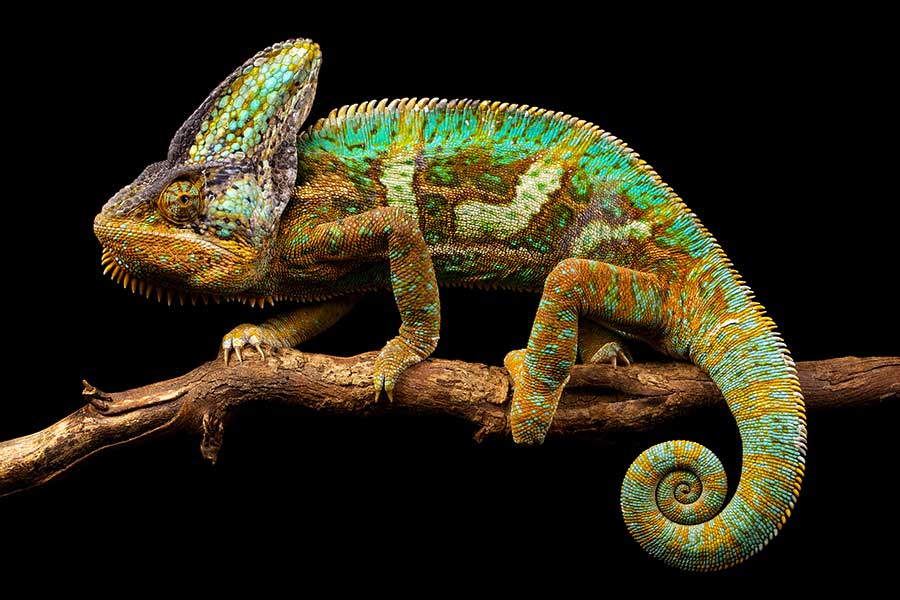Are you contemplating entering the realm of chameleon ownership? Congratulations on initiating this journey. Within the spectrum of reptilian companions, chameleons wield a unique allure, especially for individuals new to the domain of exotic pet care. In this post, we will engage in an enriching dive to identify the ideal species, ensuring an enjoyable experience for beginners in the world of reptile companionship.
Here are five chameleon species often recommended for beginners:
1. Veiled Chameleon (Chamaeleo calyptratus):
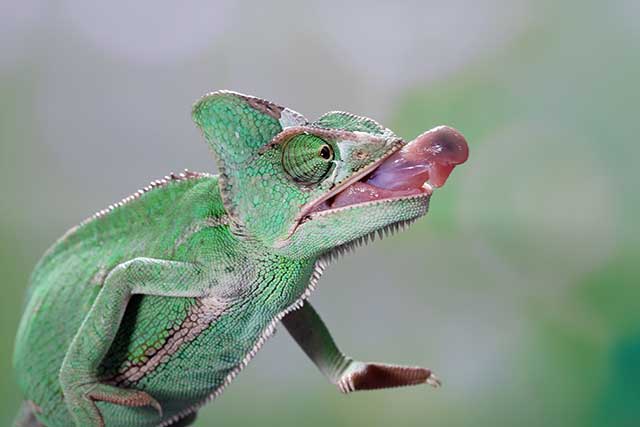
– Temperament: Generally hardy and adaptable. May be more tolerant of handling compared to other species.
– Features: Prominent casque on the head, distinctive color changes, and a prominent ridge along the back.
– Origin: Native to the Arabian Peninsula and Yemen.
2. Panther Chameleon (Furcifer pardalis):
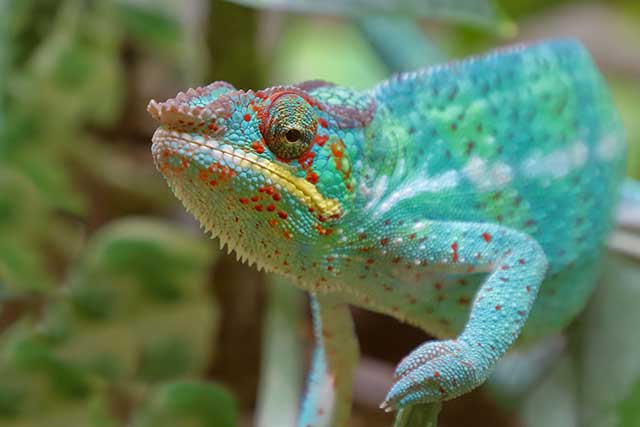
– Temperament: Known for their striking colors and patterns. May have specific handling preferences and can be more sensitive to stress.
– Features: Vibrant colors and patterns, especially in males. They exhibit a wide array of color variations.
– Origin: Indigenous to Madagascar.
3. Jackson’s Chameleon (Trioceros jacksonii):
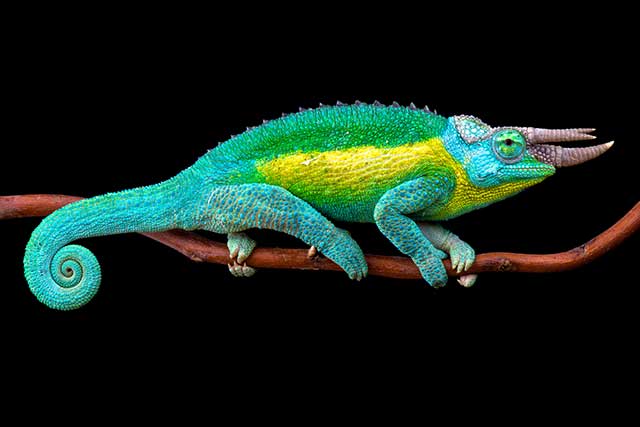
– Temperament: Generally docile and tolerates handling relatively well.
– Features: Three horns on the head, shorter snout, and a prehensile tail.
– Origin: Native to East Africa, particularly Kenya and Tanzania.
4. Fischer’s Chameleon (Kinyongia fischeri):
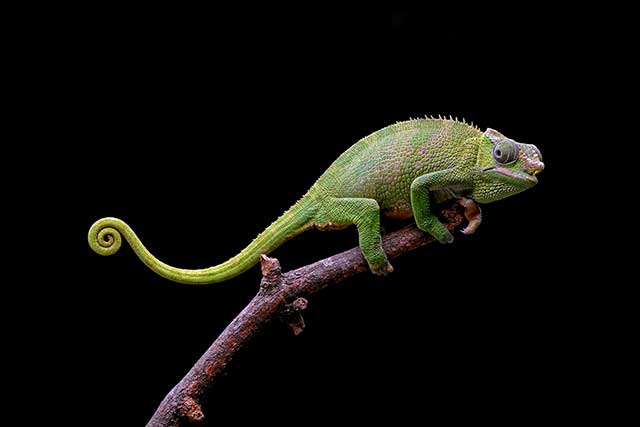
– Temperament: Usually calm and less aggressive, making them suitable for beginners.
– Features: Distinctive coloration and pattern, with prominent casque.
– Origin: Indigenous to Tanzania and Kenya.
5. Oustalet’s Chameleon (Furcifer oustaleti):
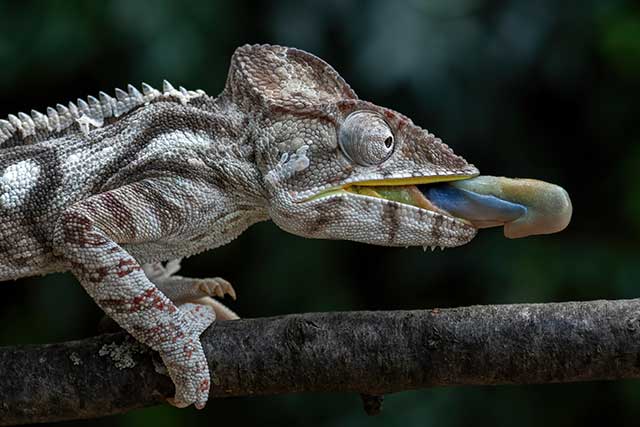
– Temperament: Generally calm but can be more territorial. May require more space compared to other species.
– Features: Large size, elongated body, and a pronounced casque.
– Origin: Native to Madagascar.
Understanding the specific needs and behavior of each species is crucial for their care and well-being. Beginners should thoroughly research and prepare suitable habitats before acquiring any chameleon species.
Chameleon Diet: Catering to Their Palate
Understanding their diet is fundamental. These incredible creatures primarily feast on insects such as crickets, roaches, and mealworms. Adding variety with occasional treats like waxworms or silkworms can add excitement to their meals. Remember, providing gut-loaded insects ensures they receive essential nutrients. Imagine it like serving a gourmet meal tailored just for them!
Handling Tips: Gentle Encounters
Handling chameleons requires a gentle touch. They’re delicate creatures, so minimal handling is best. When necessary, handle them gently and support their body properly. Abrupt movements can stress them out. It’s like having a fragile treasure in your hands—handle it with care!
Enclosure Setup: Crafting Their Habitat
Creating the ideal habitat for your pet lizard is crucial for their well-being. A spacious enclosure with plenty of branches and foliage for climbing and hiding is essential. Mimicking their natural environment helps maintain humidity levels, and UVB lighting is crucial for their health. Think of it as designing their own personal oasis!
Habitat Requirements & Temperament Consideration
While discussing the best species for beginners, understanding their specific habitat needs and temperament is vital. Different species may require varying humidity levels, temperatures, and enclosure sizes. Additionally, considering the temperament of the chosen species is crucial for a harmonious interaction and understanding their behavior. It’s like knowing the perfect environment for a specific personality!
Key Considerations: Factors to Ponder
Before diving into chameleon ownership, ponder on a few key considerations. Research your chosen species thoroughly to understand their care needs and longevity. Consider the expenses involved in setting up their habitat with appropriate lighting, heating, and plants. And most importantly, acknowledge the commitment—a chameleon’s life span means a long-term relationship. It’s like preparing for a lifelong friendship!
Key Takeaways
Venturing into chameleon ownership as a beginner offers an exciting and rewarding experience. Understanding their dietary preferences, creating a suitable habitat, and minimal, gentle handling contribute to a fulfilling journey as a novice reptile owner. Considering various factors, from care needs to long-term commitment, ensures a responsible and enjoyable adventure into chameleon companionship.
